Pezeshkian wakes up on his first day as president of an insecure Iran
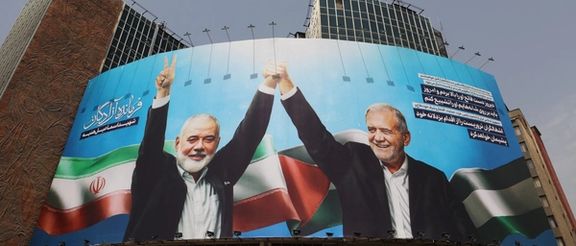
Iran’s newly elected President Masoud Pezeshkian's first day in office on July 31 proved to be an "eventful "day in the worst possible sense of the word.

Iran’s newly elected President Masoud Pezeshkian's first day in office on July 31 proved to be an "eventful "day in the worst possible sense of the word.

Amid the 2024 Olympic Games progress in Paris, Iranian athletes are battling not only their opponents but also a storm of mockery stirred by their uniforms likened to medical scrubs.
The delegation was wearing white jackets with black clothing, the women all with compulsory hijabs with film and television actor Behrang Alavi posting on Instagram: "Wishing success for the injections team."
Public figures and media outlets have not held back in their criticism.
State TV host Elmira Sharifimoghaddam said on air, "The Iranian team looked as if a team of doctors and nurses had gone to Paris."
The moderate-conservative website, Asr-e Iran, highlighted the consistently poor choice of attire for the delegations as they travel to the Games over the years, controversy around uniforms nothing new for Iran.
"Since the London 2012 Olympics, Rio de Janeiro 2016, Tokyo 2021, and now in Paris, the issue of strange, bizarre, and ugly clothing designs has been a consistent source of embarrassment," they wrote.
"It is astonishing that the Ministry of Sports and the National Olympic Committee have not been able to provide an elegant and dignified outfit for the Iranian team for the Paris Olympics in the past three years."

Adding fuel to the fire, there was no official unveiling ceremony for the uniforms before the team's departure, a shift from tradition likely intended to avoid immediate backlash.
The Ministry of Sports and the National Olympic Committee have faced intense scrutiny, with many questioning the transparency and rationale behind their choices.
Asieh Amini, a social issues analyst, told Iran International that in 2021, 31 billion rials (over $160,000 at the time) were allocated for athletes' clothing, “but this year, we don't even know how much has been spent", she said, as the country faces its worst ever economic crisis.
She added, "These uniforms have no connection to a country with various ethnic groups and their beautiful traditional clothes. How is it possible that, with all our ethnicities, traditions, and high potential, what we show to the world is so tasteless?”

Asr-e Iran's review added, "The Olympics is the most important sporting event for all athletes worldwide. With these ugly outfits, we completely destroy our athletes' morale and confidence from the opening day, and then we expect them to bring home the best medals."
Some have also shared AI-generated photos depicting how the Iran team uniforms might have looked if designed by AI.
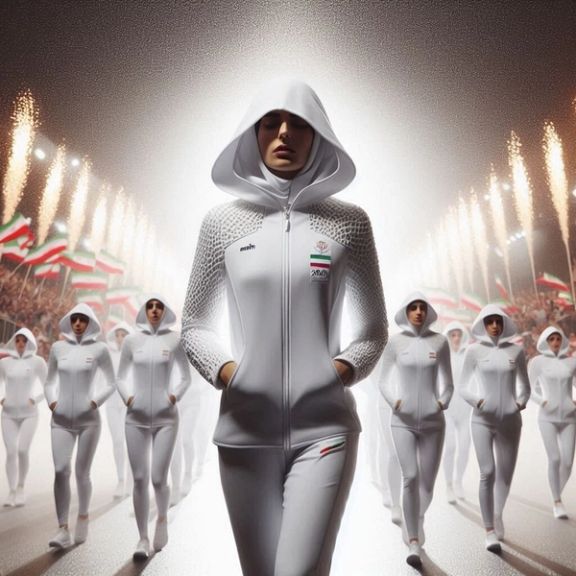
Mahsa Javar, a national rowing athlete and brand ambassador for the Iranian sports delegation's clothing, defended the designs in a controversial social media post, calling the critics "uncultured."
Her comments only intensified the backlash, with many advising her to focus on her performance rather than engage in the controversy. However, she later apologized for her comments, stating that the athletes, like others, are not happy with the uniform.
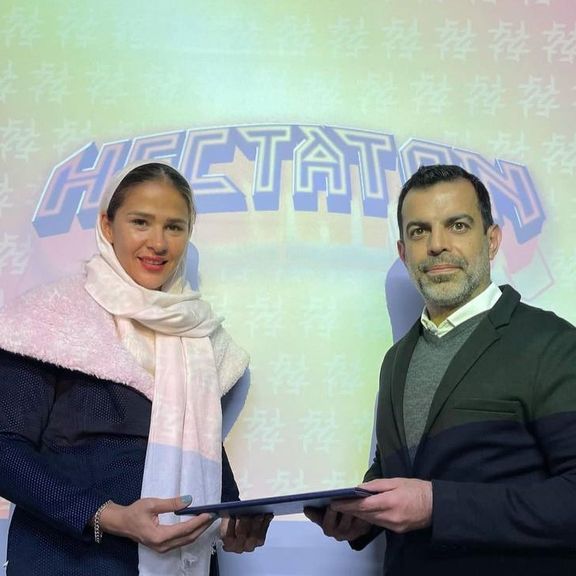
The 2016 Rio Olympics saw a major uproar over the bizarre design and color choices, leading to a complete redesign. The 2020 Tokyo Olympics followed a similar pattern, with athletes wearing turquoise blue attire and white masks, which were widely criticized, none of which bore the colors of Iran's national flag.
Prominent sports website Varzesh-3 vented frustration saying the opportunity on the Olympics' "grand stage" has been missed, once again. "Most other countries use this opportunity to showcase the most beautiful aspects of their culture and civilization. We, however, consistently fail to present a respectable image," she said.
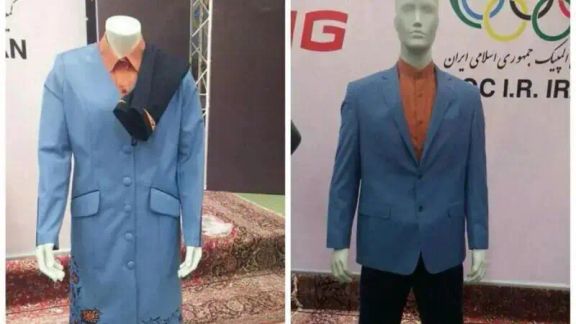
Allegations of cronyism have also surfaced. Mojtaba Pourbakhsh, a former TV host, revealed that the design contract initially awarded to the Majid brand or Merooj Inc. was abruptly handed over to the Hectaton brand, owned by Ali Aajdarkosh.
The Majid brand is owned by the Abdolmajid Saedifar family. They operate under a company named Majid Merooj Iranians, which was established in 2010. The quality of the national football, wrestling, and volleyball team uniforms designed by the company has faced criticism in recent years.
The Hectaton brand is also owned by a company named Pishgaman Danily Aras. This company was established in 2012 and, like Majid Merooj Iranians, is family-operated under the ownership of Ali Ajdarkosh.
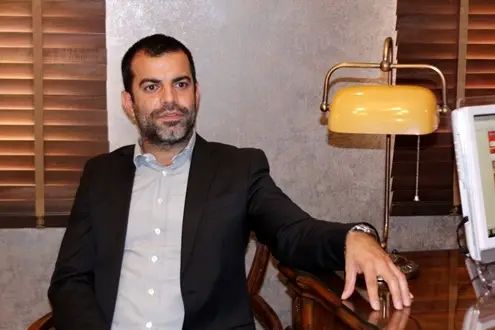
Ajdarkosh's close ties with sports officials and athletes, along with his sponsorship of various events, have raised questions about the integrity of the selection process.
According to Pourbakhsh, the National Olympic Committee, whose secretary has been Manaf Hashemi since 2022, initially signed a multi-billion contract with the Majid brand for the design and production of the uniforms. However, the project was later handed over to the Ajdarkosh family.
Another official responsible for selecting the Iranian team's outfits for the Olympics is Mahmoud Khosravi Vafa. Khosravi Vafa has been the President of the National Olympic Committee since September 2022. In 1980 and 1981, he served as a bodyguard for Ali Khamenei, the Supreme Leader of the Islamic Republic, for a short period.
Rouydad 24 reported that the Iranian government's direct intervention and preference for close associates in selecting the clothing designer bypassed usual formalities, leading to the current debacle.
"This time, everything happened behind the scenes," said Majid Nami, a member of the Clothing Union. "The result is a disgraceful representation of our culture and heritage."
“Cronyism and connections are two factors that prevent transparency in the procurement of uniforms for national and Olympic teams. If high-level decision-making and the Iranian government were free from cronyism and connections, there would be no other reason to obscure this process," said Amini in her interview with Iran International.
She also called the industry a "mafia", saying, "When you have this mafia behind all your operations and decisions, it is definitely necessary to be transparent. But to avoid accountability, you are forced to conceal everything and keep it shrouded in ambiguity. And then, when it's all over, they say it's too late to do anything about it,” she said.
“The issue is that this lack of accountability and transparency has become routine in the Islamic Republic. Corruption has essentially become a standard practice among the managers of the Islamic Republic,” she added.
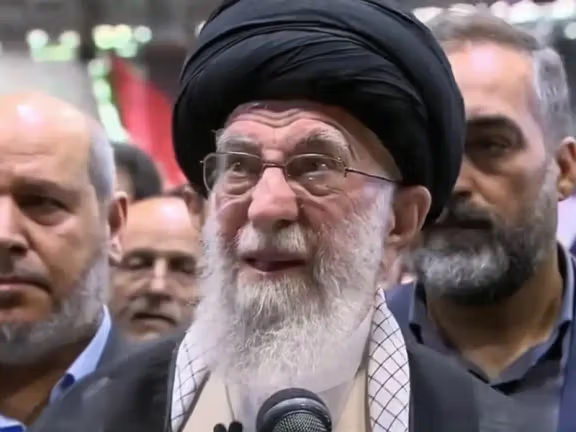
Tehran hosted a pre-burial funeral ceremony for Ismail Haniyeh, a top Hamas leader who was killed a few hours after attending the the swearing-in ceremony of President Masoud Pezeshkian.
The intense security measures, including a declared no-fly zone on Thursday, underscored the Iranian government's heightened concerns over potential threats during the ceremony after the assassination of the Hamas political chief on Iran's watch. He will be buried in Qatar, his main host country, reportedly on Friday.
It reveals the deepening vulnerability of the Islamic Republic’s security apparatus, now evidently struggling to shield itself from external and internal threats alike after what is believed to have been a precision missile killed the militant in the heart of Tehran.
From 6am to 12 noon on Thursday, the airspace over central Tehran, including the area around Tehran University and the residence of Supreme Leader Ali Khamenei, was off-limits to all air traffic, including drones.
Despite official denials from Reza Kargar of the Iran Airports Company about any impact on commercial flights, the restrictions reflected a clear state of alert.
At the funeral, significant figures such as Iranian President Masoud Pezeshkian and Parliament Speaker Mohammad Bagher Ghalibaf paid their respects to the man who had personally cultivated close ties to Iran and the Supreme Leader since becoming the political leader in 2017.
Ghalibaf, addressing the assembled mourners, described the assassination of Haniyeh as a "strategic mistake" by Israel, warning that Israel would "pay a hefty price for this."
"Their second mistake," he continued, "is ignoring our leader's words that the era of hit-and-run is over."
Khamenei's presence to lead prayers over Haniyeh’s body was marked by notable moments of tension. A video from the event, widely shared on social media, shows Khamenei casting anxious glances around.
The assassination of Haniyeh, coming on the heels of other high-profile attacks, has exposed the fragility of Iran's internal security.
Ahmad Alavi, an economist and analyst, blamed "corruption and inefficiencies within Iran's security apparatus" which has left it exposed to sophisticated foreign intelligence operations. "When resources are misused and oversight is weakened, it's inevitable that foreign agents can exploit these weaknesses," Alavi said.
The New York Times, citing Iranian sources, reported that Khamenei has instructed the Supreme National Security Council to respond directly from Iranian soil, with military plans targeting Tel Aviv and Haifa.
Journalist Jamshid Barzegar says Iran's responses so far have not seen a match against Israel and its ally, the US. In April, when Iran launched over 350 rockets, drones and missiles towards Israel, the first direct attack on the Jewish state, the majority were intercepted by Israel and a US-led coalition.
"While Israel and the US have delivered significant blows to the Islamic Republic's human and material resources, Iran has struggled to respond with equivalent actions," he said.
He pointed out that, unlike Israel and the US targeting key figures, Iran has attempted to target Israeli civilians or businesspeople abroad, often unsuccessfully, leading to international embarrassments with dozens of plots foiled in countries including Greece, Azerbaijan and Belgium.

Amid growing concerns over transparency and foreign influence, US lawmakers are intensifying their scrutiny of the Biden administration's handling of Iran-related affairs.
On Tuesday top lawmakers overseeing US foreign policy threatened to subpoena the State Department following the agency’s failure to provide information about suspended Iran envoy Robert Malley. Meanwhile, on Wednesday other US lawmakers raised concerns about potential Iranian influence within the Biden administration, specifically questioning Vice President Kamala Harris’s national security advisor, Philip Gordon.
In a letter to Secretary of State Antony Blinken, US Senate Foreign Relations Committee Ranking Member Jim Risch and House Foreign Affairs Committee Chairman Michael McCaul expressed deep frustration with the State Department's lack of transparency regarding the suspension of Robert Malley's security clearance. They condemned the Department's failure to respond to repeated inquiries since June 2023 as "deeply troubling" and unacceptable.
The lawmakers demanded the Department "provide fulsome answers" to their queries by no later than close of business on August 2, 2024. They warned that should the Department miss this deadline, they would be "compelled to pursue compulsory processes to secure any documents, materials, and testimony" relevant to their investigation from members of the State Department.
Risch and McCaul emphasized that they sent a letter on May 6, 2024, requesting immediate answers but have since received more information from the press than from official channels. They stated, "We have been made aware that there may be a classified response to our letter but have yet to receive it. This vague assurance, however, failed to include any information on when we could expect your reply or whether it would address all of our questions." Risch had previously stated that it was likely they would not get any answers unless they issued a subpoena.
In late May, Semafor reported, quoting people familiar with a Congressional probe into Malley's handling of classified information, that Biden’s Iran envoy transferred documents to his personal devices “with classifications ranging from sensitive but unclassified to classified,” and may have shared some with unauthorized people, “to advance his diplomatic efforts.” Among the documents downloaded by Malley on his personal devices, Semafor reported, were "detailed notes of the diplomat’s encounters with Iranian officials in the months leading up to his suspension.
Malley was appointed by President Joe Biden in early 2021 to revive the 2015 Iran nuclear deal, advocating for sanctions relief in exchange for nuclear restrictions. Despite efforts, the deal has not been reinstated since Trump's 2018 withdrawal. In April 2023, Malley was placed on leave and had his security clearance suspended. Iran International first reported the incident two months later, but the State Department blocked all attempts to find more information about Malley’s case.
Separately, on Wednesday US Senator Tom Cotton and US Congress Member Elise M. Stefanik Elise M. Stefani wrote to Vice President Kamala Harris regarding her national security advisor, Philip Gordon's connections to Ariane Tabatabai, a senior Department of Defense official involved in an Iranian government operation to expand Tehran’s influence in the United States.
In 2023, Iran International and Semafor investigation uncovered the Iran Experts Initiative (IEI) - a scheme devised by Iran’s foreign ministry in 2014 to bring together a network of scholars outside Iran to advocate Iran's foreign policy and nuclear strategy. A few were been named in the report, including Ariane Tabatabai, who entered the State Department after Biden was elected.
Cotton and Stefanik cited Mr. Gordon's past collaborations with Ms. Tabatabai and his associations with the National Iranian American Council (NIAC), an alleged Iranian influence organization.
"We write to express concern about your national security advisor Mr. Philip Gordon’s connections to Ms. Ariane Tabatabai," Cotton and Stefanik stated in their letter. They added that Ms. Tabatabai was "reportedly involved in an Iranian government operation to expand Tehran’s soft power in the United States."
Cotton and Stefanik requested answers to several questions, including whether Mr. Gordon underwent security screening, his awareness of Ms. Tabatabai’s connections, and what actions Vice President Harris plans to take to address Iranian sympathizers within the administration. They set a deadline of August 9, 2024, for a response.
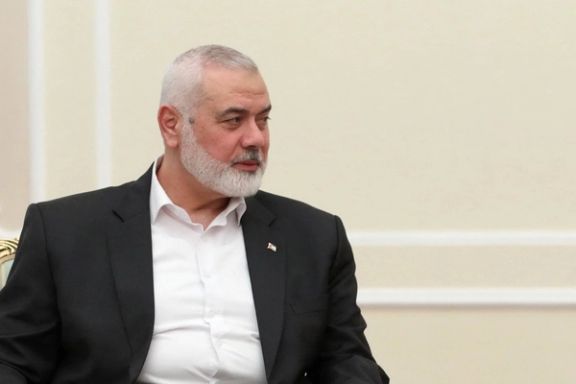
Details surrounding the operation that led to the killing of Hamas leader Ismail Haniyeh in Tehran remain unclear. Neither Iran nor Israel, which is suspected of being behind the operation, has provided specifics.
Yet, there are numerous reports that may provide clues for experts to speculate on how the operation was carried out – and whether it involved advanced weaponry or a sophisticated drone strike.
Where and when?
In one of its statements, the IRGC announced that the attack resulting in Haniyeh's death occurred at two in the morning and stated that he was killed by "a projectile from the air" while stationed at one of the "special residences for war veterans in northern Tehran."
Hours later, the Iran-aligned Lebanese network Al-Mayadeen reported that the missile used to attack Haniyeh's residence was launched not from within Iran, but from another country.
Since then, however, Israel’s Channel 12 reported that Iranian officials were coming to the conclusion that the projectile was actually fired from within the country’s borders.
Where did Haniyeh reside in Tehran?
Although the Iranian state’s Fars news agency reported that Haniyeh was staying at a special residence for war veterans in northern Tehran, little is known about the building.
Some unofficial sources inside Iran, have suggested that Haniyeh could have been killed near the Saadabad Palace – a historic royal complex located in the northern part of Iran’s capital. Boasting hundreds of acres, the complex has been used by the Islamic Republic for various official events for many years.
Some reports have also suggested that the Basij al-Zahra camp in the northwest of this complex was Haniyeh’s residence.
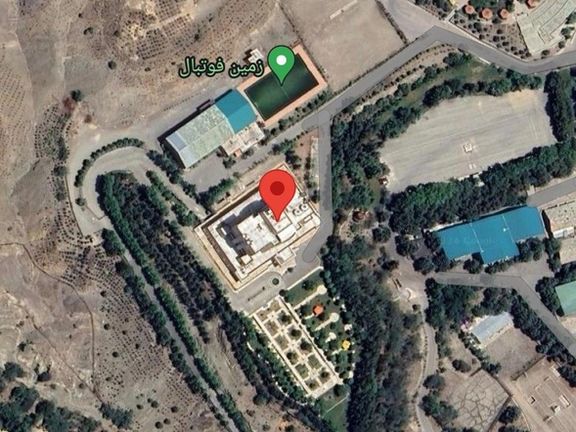
During President Akbar Hashemi Rafsanjani's administration, leading up to the Islamic Summit Conference in Tehran in 1991, a building was reportedly constructed at Saadabad Palace to accommodate special guests. This facility might have been used to host distinguished visitors, although specific details about Haniyeh’s residence there are not well-documented.
Was there an explosion?
Some local witnesses reported hearing an explosion in the Saadabad area early Wednesday morning.
State-run media outlet Tejarat Online published a story that suggested that the explosion's sound was "so loud that it triggered all the car alarms and was heard throughout northern Tehran, with smoke and dust from the explosion covering the area."
According to sources connected to Hamas, the building targeted in the attack was also occupied by his bodyguard, Ziad Nakhalah, the leader of Islamic Jihad, along with a Hamas delegation.
So far, however, there have been no reports indicating that these individuals were harmed.
In addition, no reports have emerged about other residents of the building being injured, leaving the door open to assume that despite the precision of any operation to kill Haniyeh, the explosion's power and intensity were likely limited.
Missile vs drone?
Although the IRGC's statement referred to "a projectile from the air," the origin of the projectile remains unclear.
Sky News Arabia reported that based on its Iranian sources, that the building Haniyeh was in, was targeted by a missile fired from a nearby building.
Aerial projectiles can be launched from either fighter jets or military drones. For such strikes, military aircraft would typically utilize the airspace of neighboring countries. While using the airspace of other countries without authorization and conducting operations near border areas is challenging, it is not impossible.
In Israel’s April attack on the 8th Tactical Airbase in Isfahan, American officials confirmed that Israeli aircraft launched three missiles from outside Iran's borders targeting a radar site protecting the Natanz nuclear facility. Iranian officials, however, attributed the incident to enemy drones at this military base.
According to Israeli Channel 14 military correspondent Hallel Bitton Rosen, however, the attack was not carried out by launching a missile, but with another weapon that exploded close to him.
Drawing on Israel’s past operations, the country has a history of conducting drone attacks on Iranian soil.
In February 2023, the Wall Street Journal reported that Israel was responsible for a drone attack on a Defense Ministry workshop complex in Isfahan and an explosion at a munitions center in the city. Iranian officials described the attack as "unsuccessful" and stated that it caused only limited damage.
What are some experts saying?
Israel has not claimed responsibility for the attack, but one Israeli and two US officials told Axios that Israel was behind the strike.
About two hours before Haniyeh’s death, Richard Goldberg, a senior advisor at the Foundation for Defense of Democracies, appeared to allude to the attack, saying "The Israeli Air Force is demonstrating its range tonight."
After the news of the killing of the Hamas leader broke, Goldberg, in reference to Israel striking Iran previously, posted on X: "If you can hit a radar next to a nuclear site, you can hit a house in Tehran. Ayatollah is exposed."
Major Andrew Fox, a researcher at the Jackson Institute and a former British paratrooper, told Iran International English that the attack might have been carried out with a missile launched from outside Iran. According to him, the Caspian Sea, given its proximity to Tehran, is a suitable option for this operation.
Fox, drawing on his experience and emphasizing that such missiles are guided with precise laser technology, said: "A soldier on the ground targets the laser pointer exactly at the point where he wants the missile to hit, guiding the missile to the impact point."
The expert also noted that Israel has missiles designed to use the kinetic energy from the speed and weight of the warhead for lethality. This explains why, in some missile attacks, fewer casualties and less noise are observed compared to those with explosive warheads.
Ronen Solomon, an Israeli intelligence and security analyst, highlighted the proximity of Baku and Tel Aviv, as well as Azerbaijan’s common border with Iran. He suggested that the use of Azerbaijani airspace for the attack is highly likely due to the short distance and the presence of Israeli weapons in the region.
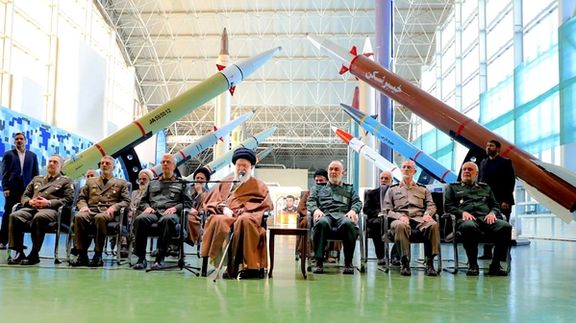
Shaken by the embarrassment of Ismail Haniyeh's assassination in Tehran, top Iranian officials are issuing threats of harsh retaliation against Israel, attempting to put a brave face on a monumental security failure.
Blaming Israel, Supreme Leader Ali Khamenei stated that he considers it a “duty to seek justice for him, who was martyred within the territory of the Islamic Republic of Iran.”
The Islamic Revolutionary Guard Corps (IRGC) issued a statement attributing the attack to "the Zionist regime" and declared that this "crime" would be met with a "harsh and painful response" from the Resistance Front, particularly from Iran.
Even the ostensibly 'moderate' Pezeshkian adopted a harsh tone, vowing that the Islamic Republic would defend its territorial "integrity, dignity, honor, and pride," and promising to make the "terrorist occupiers" regret their actions.
The Iranian foreign ministry released a statement accusing the US of being an "accomplice and supporter of Israel in the killing of Ismail Haniyeh," and indicated that the Islamic Republic considers an "appropriate response" to this action. Iran’s former acting foreign minister, Ali Bagheri-Kani, stated that Iran has the right to respond to the assassination of Haniyeh, describing the attack as a "cowardly act" and a “breach of international law and the UN Charter.” Senior Iranian diplomats also vowed significant retaliatory actions.
Iran’s UN Mission posted on X, stating, “The response to an assassination will indeed be special operations—harder and intended to instill deep regret in the perpetrator.” Mojtaba Amani, Iran’s ambassador to Lebanon, also stated that “Iran, in return, will not allow this region to be prey to the joint US and Israeli administrations.”
The only official adopting a somewhat more measured tone was First Vice President Mohammad Reza Aref, who refrained from mentioning any retaliation and stated, “The high power of the establishment will not be affected by these mischievous actions.”
Aref also remarked that the attack aimed to create a new crisis in the region and complicate Iran's regional and international relations, particularly at the onset of the new administration's term.
One could argue that Aref has a point, as the attack and Iran's vow of retaliation for the Hamas leader's assassination cast doubt on the portrayal of the establishment as having shifted to a more 'moderate' direction.
Although chants of “Death to Israel” and “Death to America,” alongside calls for “wiping Israel off the map,” remain central to the Islamic Republic’s political discourse, officials had hinted at a strategy shift under new president Masoud Pezeshkian. In early July, Iran's former Acting Foreign Minister, Ali Bagheri-Kani, addressed the United Nations Security Council in New York, emphasizing Pezeshkian's foreign policy aimed at "opening new horizons" to foster "friendly relations with other nations based on dialogue, cooperation, equality, and mutual respect."
Despite these diplomatic assertions, Iran has continued to publicly prioritize and defend its support for sponsored militias, revealing a fundamental contradiction. While the West accuses Iran of sponsoring terrorism, thereby hindering mutual dialogue, Iran remains steadfast in its stance.
When asked whether Pezeshkian’s election would alter the US negotiating position, White House spokesman John Kirby unequivocally responded, "No," citing Iran's continued support for militant groups. “They’re still supporting terrorist groups like Hamas and Hezbollah. They’re still supporting the Houthis as the Houthis attack ships in the Red Sea. They’re still attacking shipping as well,” Kirby stated at a press conference. “So no, no.”
The presence of militia leaders, including Hamas' Political Bureau Head Ismail Haniyeh, Islamic Jihad Secretary-General Ziyad al-Nakhalah, and Yemeni Houthi spokesman Mohammed Abdul-Salam, at Pezeshkian's inauguration on Tuesday in parliament, starkly underscores Tehran's true priorities.
Haniyeh's killing early on Wednesday suggested that sponsoring regional militias carries significant consequences, and while seeking the removal of sanctions, exposes inherent contradictions, underscoring the impossibility of having one's cake and eating it too.
He woke up to the news of the killing of Hamas's Ismail Haniyeh, and started his official business with three days of mourning for the Palestinian figure.
He couldn't even attend his first cabinet meeting, which was held with the previous government's ministers still in office until his own cabinet takes over in two to three weeks. The meeting was led by his much-criticized Vice President, Mohammad Reza Aref, who began the session with a neutral and formulaic speech, carefully avoiding any strong statements. This contrasted with other Iranian officials who vowed revenge against Israel for Haniyeh's death.
A series of other news followed. As the Tehran Stock Exchange experienced one of its biggest crashes, Aref told reporters that the government would "inject funds" into the stock market from the National Development Fund, effectively Iran's Foreign Currency Reserve. Few governments would take such a step, but the Islamic Republic, known for its lack of a clear economic policy, is one of them.
Simultaneously, the exchange rate for the US dollar, which had been around 570,000 rials per dollar the previous week, saw one of its biggest jumps in months, rising to over 610,000 rials per dollar by Wednesday morning. Iranian economist Ali Sarzaim attributed the increase not to economic factors but to the market's reaction to Haniyeh's death.
However, the biggest impact of the news appears to be Iranian's disillusionment about the Islamic Republic's security. Hundreds of tweets during the early hours of the morning contained sarcasm about Iranian officials' constant boasting about the country's security. Iranian journalist Sara Massoumi noted that the attack undermined the reputation and influence of Iranian intelligence.
Some Iranians on social media mocked the government, suggesting it should focus more on protecting its high-level guests rather than sending security forces to the streets to beat and arrest women who defy the compulsory hijab.
Revelations about Iran's intelligence vulnerabilities surfaced just days after Intelligence Minister Esmail Khatib claimed that his ministry had dismantled Israel's influence network within the country. Earlier, former Intelligence Minister Ali Yunesi had warned that even Iran's highest-ranking officials are not immune to Israeli attacks.
Amid calls from many Iranians for the new president to protect and uphold citizens' rights, a popular singer whose song Baraye [For] went viral during the Mahsa uprising in 2022, and who was briefly jailed at the time, tweeted that he has been summoned to prison to serve a 3.5-year sentence—simply for singing the song.
In another development, a report on the conservative Ghatreh News website, as well as numerous social media reports from Lahijan, a city in Gilan Province in northern Iran, say that the city's Friday prayers leader Javad Soleimani, was killed by multiple stabs during what has been characterized as "a personal matter." However, according to the official website of the Qom Seminary, the cleric was "assassinated."
Pezeshkian’s second day in office on Thursday was not much better than his first, as he attended the symbolic funeral of Haniyeh in Tehran University, where Supreme Leader Ali Khamenei recited prayers, as he nervously watched the skies.